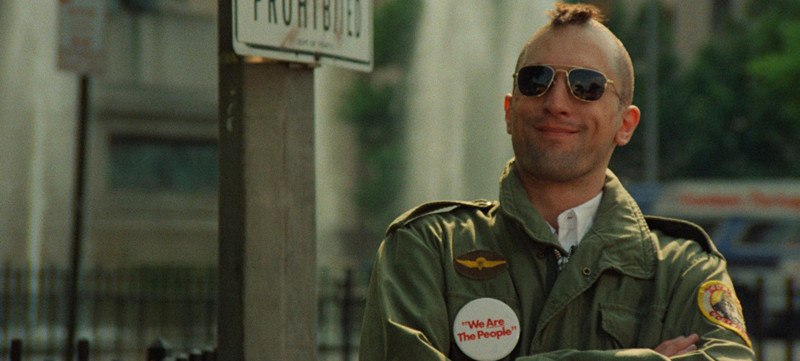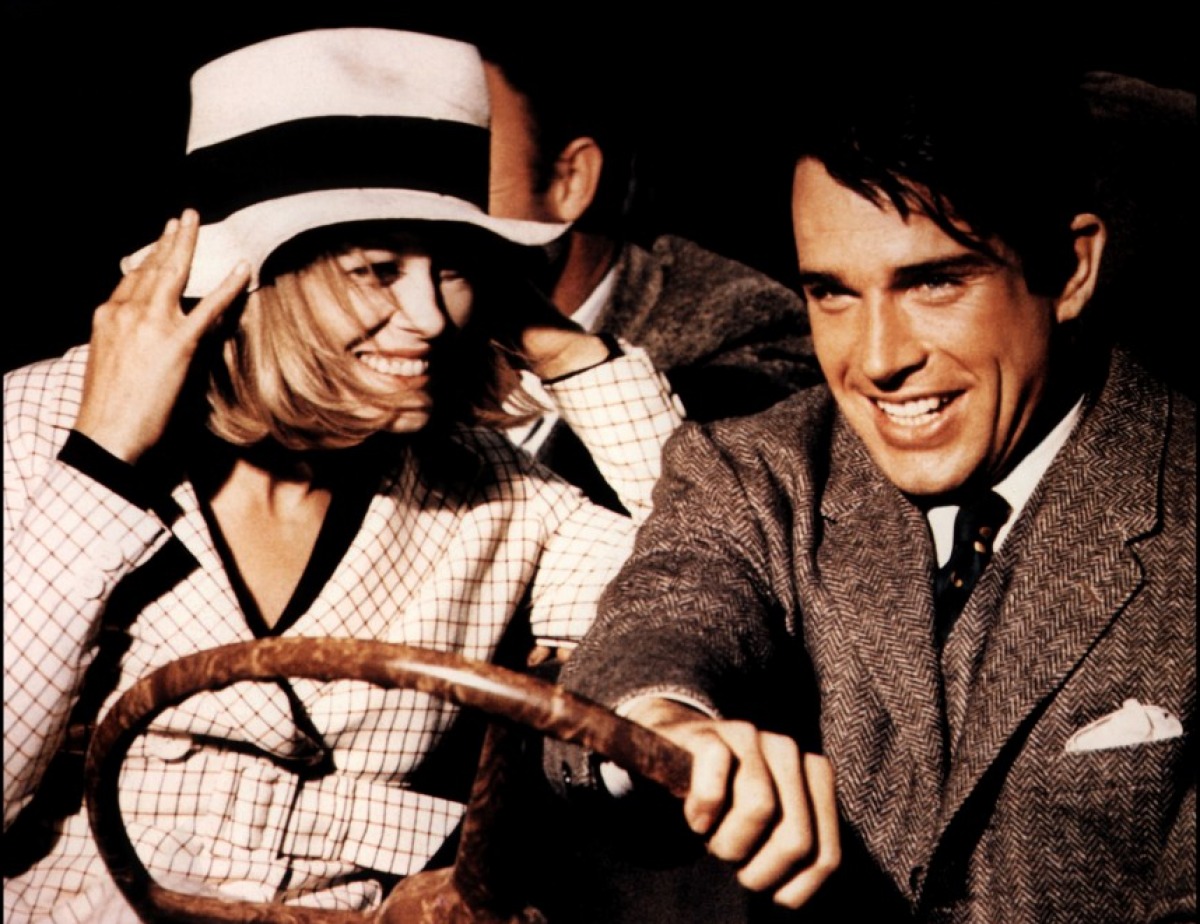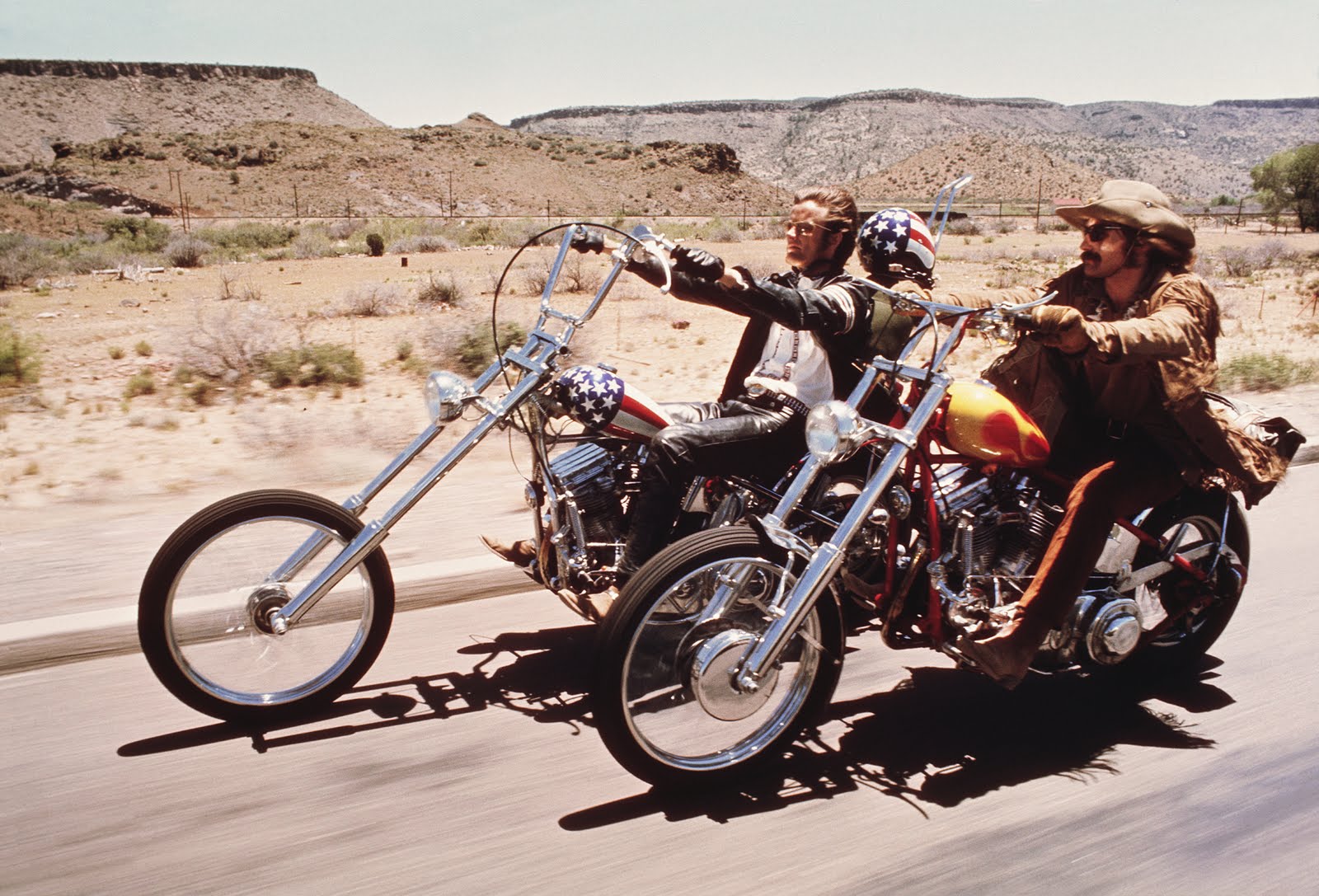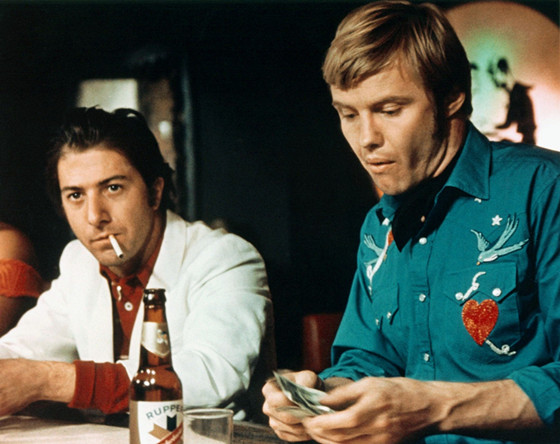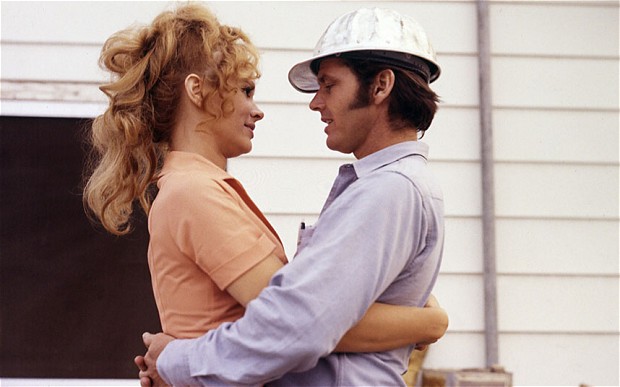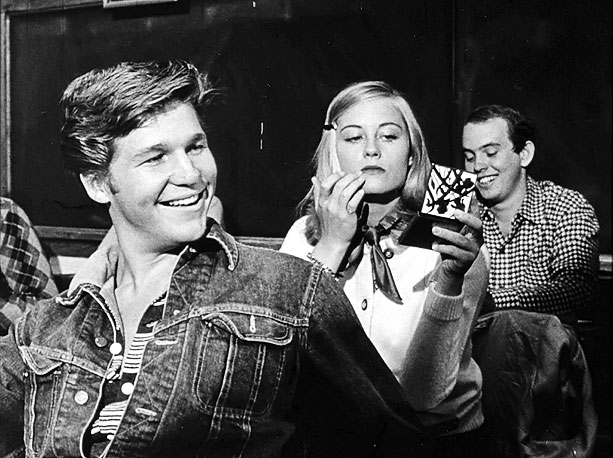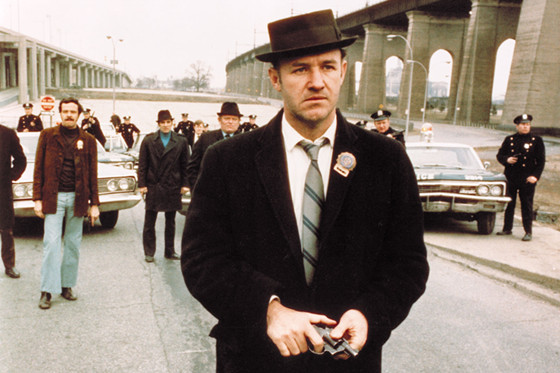American cinema can roughly be divided in four major periods: the silent era, the classical Hollywood cinema or golden age of Hollywood, New Hollywood (also known as post-classical Hollywood or the Hollywood New Wave) and the contemporary modern “blockbuster” era.
Of these periods New Hollywood is the shortest one, roughly spanning a decade, with its early beginnings in the late sixties till its decline around 1980.
The period distinguished itself as young film school trained and counter-culture bred directors came to the forefront and were given greater creative freedom as studios had seen their profits declined sharply using their old production techniques and were desperately trying to crack the more youthful market, which now had its own dollars to spend.
The period also saw a clear break from classical narrative forms with a-chronological storylines, “twist” or even bleak endings and blurring lines between good and evil in which the world was depicted in infinitely more shades of grey. Lastly, its films were often heavily influenced by European cinema of the sixties, which had had a great impact on this new generation of young American filmmakers who had often studied cinema.
This list focuses on New Hollywood films that also clearly embody the anti-authoritarian and disillusioned spirit which defined so much of the seventies zeitgeist.
The optimism of the sixties had given way to disappointment and even paranoia as the Vietnam war continued and political scandals like Watergate rocked the nation. It’s always impossible to be even remotely comprehensive in such a summary but this is also the reason that certain great films of the period will not appear here.
The Graduate for instance is just as an important transitional film as Bonnie & Clyde as it also opened the eyes of the studios to the emerging powerful youth market but didn’t make the cut. The Godfather and Apocalypse Now are both absent as I decided to include Coppola’s The Conversation instead and no films by George Lucas and Steven Spielberg have been included as they basically ushered in the next blockbuster phase of Hollywood cinema, even though both directors’ early works are definitely part of the New Hollywood canon and the directors themselves very much part of this generation of filmmakers.
What you’ll find here are a list of great New Hollywood films, which are all very much a product of their time and the social landscape that existed in the United States in the seventies and could only have been made in Hollywood during these years.
1. Bonnie & Clyde (Arthur Penn – 1967)
Whereas Bonnie and Clyde is often cited as the first film of New Hollywood, and in a way of course it is, the film is maybe better described as a progenitor of the movement as it still was a fairly lone voice in the wilderness when it was released in 1967.
It broke conventions with its brutal and realistic violence, its franker portrayal of sex and glamorised depiction of murderous outlaws as rebels and was initially even conceived as a project for Francois Truffaut and later Jean-Luc Godard, both seminal figures in the French New Wave. The film also opened Hollywood’s eyes to the youth market as the film was enormously popular with the younger generation.
Based on the real-life robbers Clyde Chestnut Barrow and Bonnie Elizabeth Parker, the film follows our titular ‘heroes’ as they meet when Clyde tries to steal Bonnie’s mother’s car and consequently become partners in crime. They gather a gang around them and whilst they start gaining notoriety for their violent behaviour they are also depicted as modern-day Robin Hoods when it is reported that they allowed a bank customer to keep his money during one of their robberies.
Soon they are seen as heroes by the public to the displeasure of the Texas Rangers who are hot on their heels. Ultimately the duo is betrayed by the father of one of their gang members, which results in one of the bloodiest shoot-outs ever committed to celluloid up until that time.
The film inspired a cover story by Time Magazine entitled “The New Cinema: Violence…Sex…Art” and opened the floodgates for many filmmakers to push the envelope even further in its wake. But it wouldn’t be until a small independently produced picture in 1969 turned into a monster hit that the movement would really find its voice.
2. Easy Rider (Dennis Hopper – 1969)
The most famous counter-culture film of the late sixties and the movie that really ushered in the New Hollywood of the seventies, Easy Rider might look a bit dated nowadays but it’s a wonderful time capsule and still holds up remarkably well for a film that is so much of its era.
After throwing their watches away, two bikers, Billy (Hopper) and Wyatt, (Peter Fonda), start their roadtrip from LA to New Orleans ‘in search of America’. The men have just sold a lot of cocaine and plan to party at the Mardi Gras before they “retire” in Florida with the money which is hidden in one of the fuel tanks of their bikes.
Along the way, they pick-up a hitch-hiker, get thrown in jail and team-up with a lawyer (Jack Nicholson), who joins them on their trip. But during their travels, the men find out that the American ideal of freedom seems to be nothing but a mere illusion.
Made on a small budget of half a million dollars and grossing over 19 million at the box-office, Easy Rider was one of the movies that really opened Hollywood’s eyes to not only the spending power of young audiences but also to the economic viability of addressing topical social issues.
The film was also the directorial debut for Dennis Hopper, who received a First Film Award for his efforts at Cannes. Peter Fonda produced and both men wrote the screenplay together. Jack Nicholson received an Oscar nomination for his role, became a instant star and was well on his way to become an icon for New Hollywood in the process.
3. Midnight Cowboy (John Schlesinger – 1969)
Based on the same name novel by James Leo Herlihy, Midnight Cowboy was John Schlesinger’s first American film and one of the first major studio movies to be given the at the time new X rating, which it received for containing a scene which merely suggested a man giving another man a blowjob. Whilst the film might appear not nearly as controversial today, in 1969 this was still a very big deal.
Midnight Cowboy tells the story of two lost souls, one a naive and not too smart gigolo from Texas called Joe Buck (Jon Voight) who thinks he can make an easy living in the big city by prostituting himself, the other a sickly con-man named Rico “Ratso” Rizzo (Dustin Hoffman), who strike up a friendship in their attempt to make it in the underbelly of New York.
Joe’s troubled past is told in the form of flash-backs whilst we learn about Ratso’s back story through his own account as he tells Joe about his history. When Ratso’s health deteriorates, Joe performs one last trick and buys them bus tickets to Miami, the place Ratso has always dreamed about escaping to.
The movie struck a chord with late 60s audiences whose dreams of freedom and change had to changed to resignation and it was a another prime early example of the spirit of New Hollywood, which would dominate the seventies and early eighties with its grittier and more personal films. Midnight Cowboy won three Academy Awards, including Best Picture (the only one ever for an X rated film), Best Director and Best Adapted Screenplay, and six BAFTA awards in Schlesinger’s native England.
4. Five Easy Pieces (Bob Rafelson – 1970)
Another important and early film of Hollywood’s New Wave, Five Easy Pieces was the first movie to get Jack Nicholson, an pivotal actor of the movement as will become clear by his contribution to five of the entries on this list, really noticed after his short but memorable role in Easy Rider the year before.
The film tells the story of Bobby Dupea (Nicholson), a frustrated blue-collar oil-rig worker who lives with his waitress girlfriend (Karen Black) and spends his time not doing all that much except for being a nasty son-of-a-bitch. Being generally bored and unsatisfied, he goes to see his sister, who tells him that their father is dying.
Bobby, who never had a good relationship with his father reluctantly decides to go back home and we learn that he used to be a musical prodigy from an upper-class family, who escaped what he perceived to be a stifling existence in search for more meaning in life.
Nicholson’s alienated character struck a chord with the audience in the early seventies as it exemplified the air of discontent as well as the class and cultural differences eating away at American society. The film was a huge critical as well as commercial success and was nominated for four Academy Awards, including Best Picture and Best Actor, although it ended up winning none of them. The title of the film refers to five classical piano pieces which are played throughout the movie.
5. The Last Picture Show (Peter Bogdanovich – 1971)
Adapted from a 1966 semi-autobiographical novel of the same name by Larry McMurtry, The Last Picture Show was a highly acclaimed drama by critic-turned-director Peter Bogdanovich, who had worked with Peter Fonda and Dennis Hopper on the Jack Nicholson Scripted The Trip in 1967, which had laid the foundations for the aforementioned Easy Rider.
The film tells the coming of age story of Sonny (Timothy Bottoms) and Duane (Jeff Bridges) as they do the things that senior high school students tend to do in a small decaying Texas town in 1951. They go to the movies, play football and hang out in the local pool hall owned by Sam the Lion (Ben Johnson) who is a bit of a role model to the boys.
We follow Sonny for about a year as he has an affair with his football coach’s middle-aged wife Ruth (Cloris Leachman), deals with the loss of Sam, inherits his pool hall and has a brief falling out with Duane as he courts and even tries to elope with Jacy (Cybill Shepherd), a girl who used to out with his friend. As a result Duane decides to join the army and go to Korea but before he does the boys go to the final screening at the local cinema which is closing down as the town is clearly on its last legs.
Clearly reflecting the pessimism of the time, the film examines the American mindset through a town which is slowly withering away and its people who seem to have no future unless they are able to get out. The movie is all about lthe oss of innocence for its main character and his lack of a future, thereby making a statement on the entire state of the nation in the early seventies.
The movie was nominated for eight Oscars, including Best Picture and Director, but only won two for Best Supporting Actor and Actress. Nearly twenty years later Bogdanovich directed a sequel called Texasville, which saw Jeff Bridges and Cybill Shepherd return as Duane and Jacy.
6. The French Connection (William Friedkin – 1971)
Adapted and fictionalized by Ernest Tidyman from the non-fiction book about drug trafficking The French Connection: A True Account of Cops, Narcotics, and International Conspiracy by Robin Moore, The French Connection was a highly successful action-packed thriller starring Gene Hackman and Roy Scheider.
Jimmy “Popeye” Doyle (Hackman) and his partner Buddy Russo (Scheider) are New York detectives trying to crack down on the drug trafficking from Europe into the United States. They discover that a French druglord, Alain Charnier (Fernando Rey), will be smuggling a huge amount of heroin hidden in a car into the U.S. from France and soon after their investigation is joined by a federal agent. But the stakes are high and making the bust is not going to be easy.
Featuring possibly the most famous car chase scene in the history of film with a spectacular chase through the streets of New York, The French Connection raised the bar for action movies and became a hugely influential film.
It also displayed a gritty sense of realism as Gene Hackman portrayed his character as a violent, racist and generally unlike-able thug with a badge, which had previously been virtually unheard of in detective movies where the heroes used to be clean-cut good guys. The film was also primarily shot on location in New York, greatly adding to the overall grimy tone of the movie.
The French Connection was nominated for eight Oscars, ultimately winning five of them for Best Picture, Best Director, Best Actor, Best Adapted Screenplay and Best Editing as well as most major awards at the Golden Globes and a string of international awards to boot. Together with Dirty Harry, which was released the same year, these two films changed the police action film forever and their influence can still be found in their modern day counterparts.
